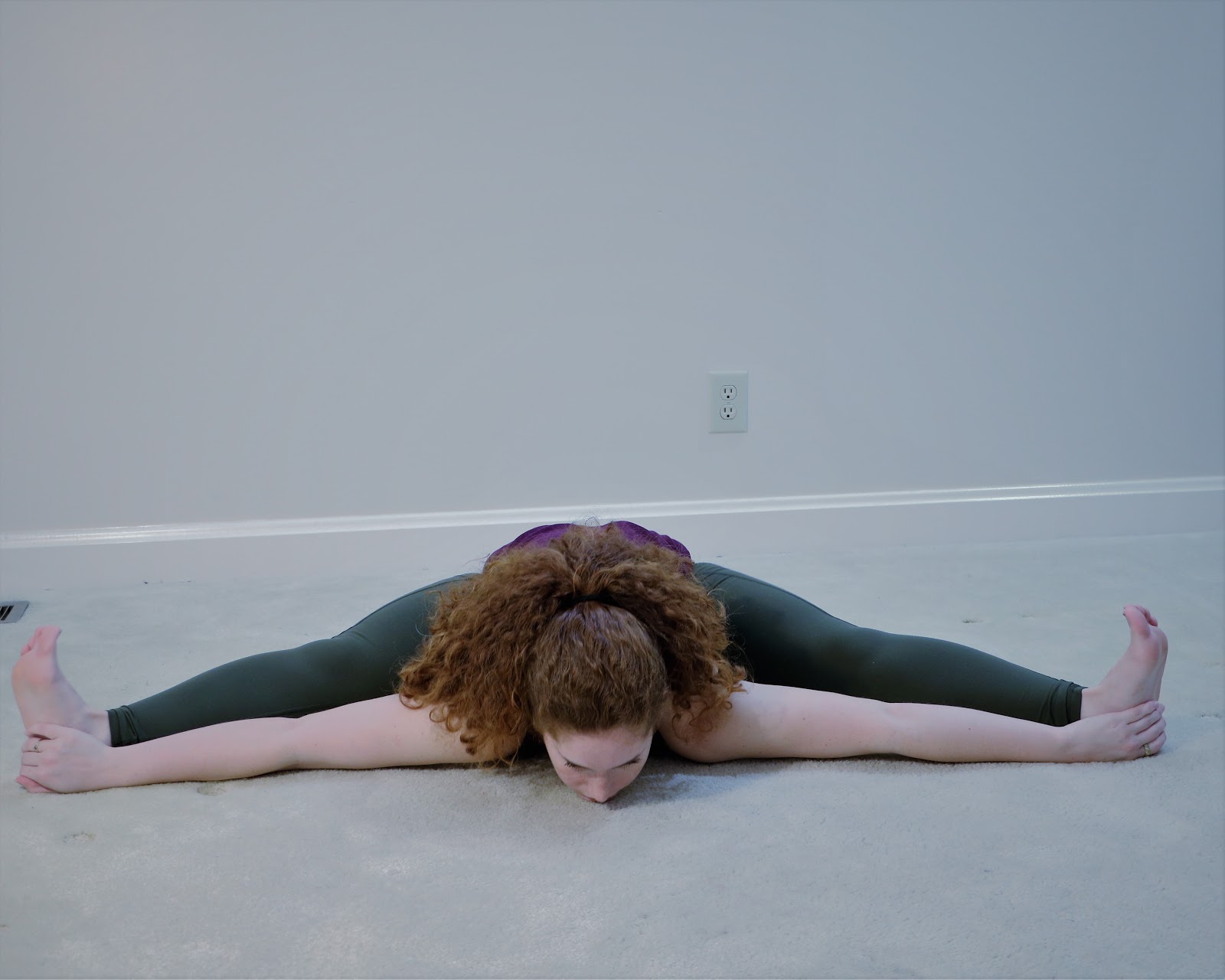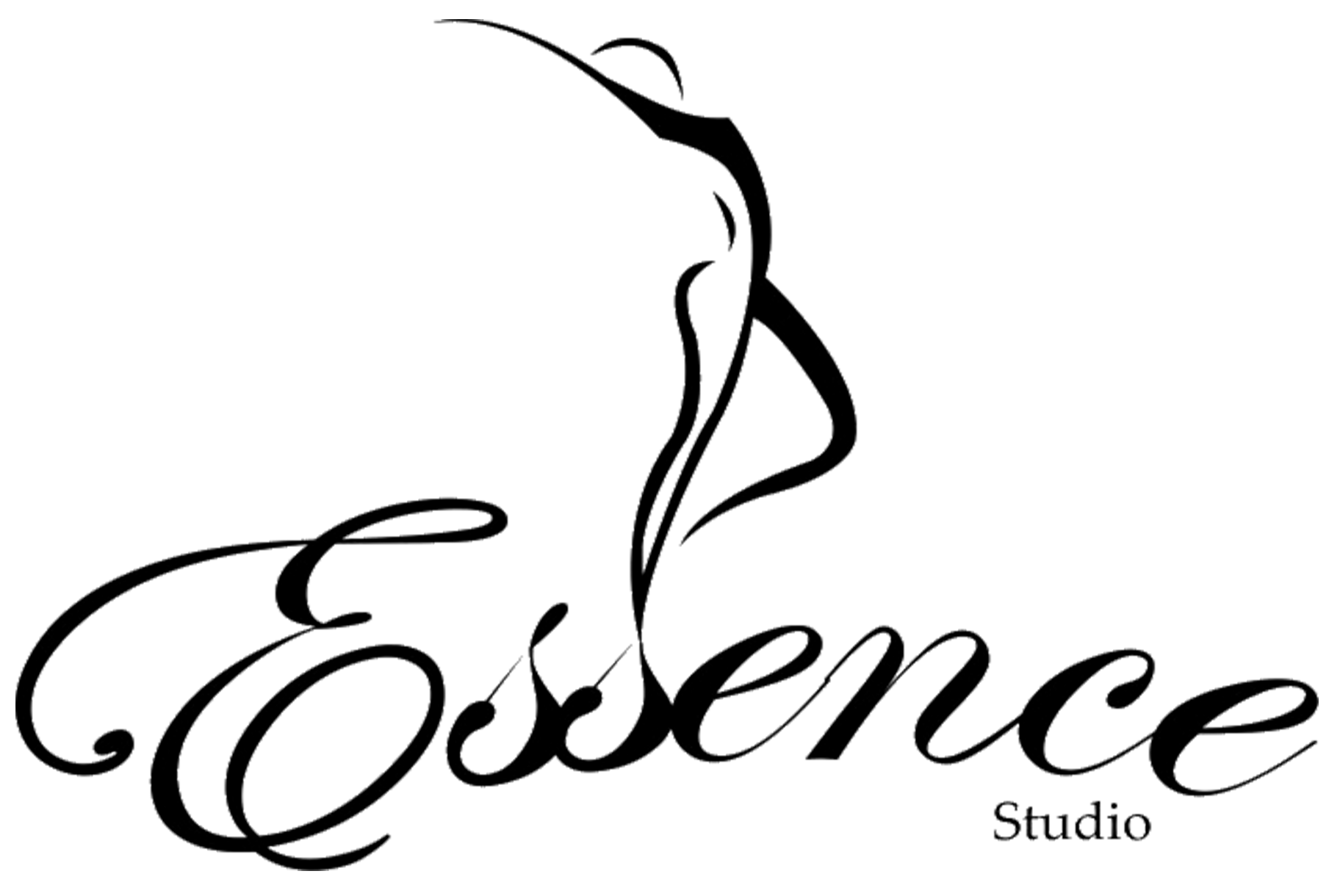
POSE TYPE
Hip Opener, Seated
POSE CATEGORY
Forward Bend
PRONUNCIATION
oo-pah-VEES-tah cone-AHS-uh-nuh
Setup and Key Actions
Sit tall with your legs extended out in front of you, and open your legs up wide (aim for about 90 degrees—not necessarily as wide as you can get them).
Keep your feet flexed and your kneecaps and your second and third toes pointing straight up toward the sky.
If your lower back tends to round, you may find it helpful to sit up on some extra height (like a folded blanket or blankets). You might also find that using your hands to internally rotate (turn in) your thighs (while keeping your feet flexed and your legs active!), an action that may help you to maintain the natural curve of the lower back. Make sure that your knees and your second and third toes continue to point directly up.
Continuing to sit tall, bring your hands to touch your inner quadriceps, above your inner knees. Can you feel the muscle firm under your fingers? If not, try bending your knees a little, then slowly straighten your legs (but not so much that your heels come off of the floor). If you’re more verbally oriented, you might also find the cue “Lift your inner knees” to be useful here.
Maintain that activation, and place your fingertips on the floor beside your outer hips. Line up the back of your skull with the back of your tailbone. Draw the pinky-toe sides of your feet back toward you (they will tend to pull forward), and press out through the balls of your big toes (they will tend to pull back). Press your thighbones into the floor.

Upavistha Konasana
Remain upright, or begin to hinge forward from your hip creases, maintaining a long spine and active, neutral legs (meaning they’re not rolling out or in) as you walk your hands down the inside of your legs. As with any forward bend, prioritize maintaining length in your spine over going “deeper” in the pose. If your upper back tends to round a lot more than the rest of your spine, back out of the forward bend and focus on lengthening, leading with your heart (not your chin) as you move forward, perhaps keeping your spine neutral and not rounding for the time being.
If you’re moving into the forward fold, continue to lengthen through your spine, reach forward through your heart, and round evenly through your spine as you fold forward, perhaps coming onto your forearms, or maybe even bringing your chest to the floor. Remember: Getting low to the ground is not nearly as important as maintaining a long spine and active, neutral legs.
If getting your chest to the floor in this pose feels easy, prioritize keeping your legs neutral and active and grounding down through your sitting bones as you lengthen forward in the pose.
To come out, maintain a long spine as you come upright, leading with your chest.
Modifications
If you can maintain length through your spine folding forward but can’t comfortably lower your chest to the floor, try placing a bolster on the floor between your legs and in front of your pelvis (the “tall” way, as opposed to the “wide” way) and folding forward over the bolster. Turn your head in one direction for a few breaths and then in the opposite direction for a few breaths to ensure an even stretch.





